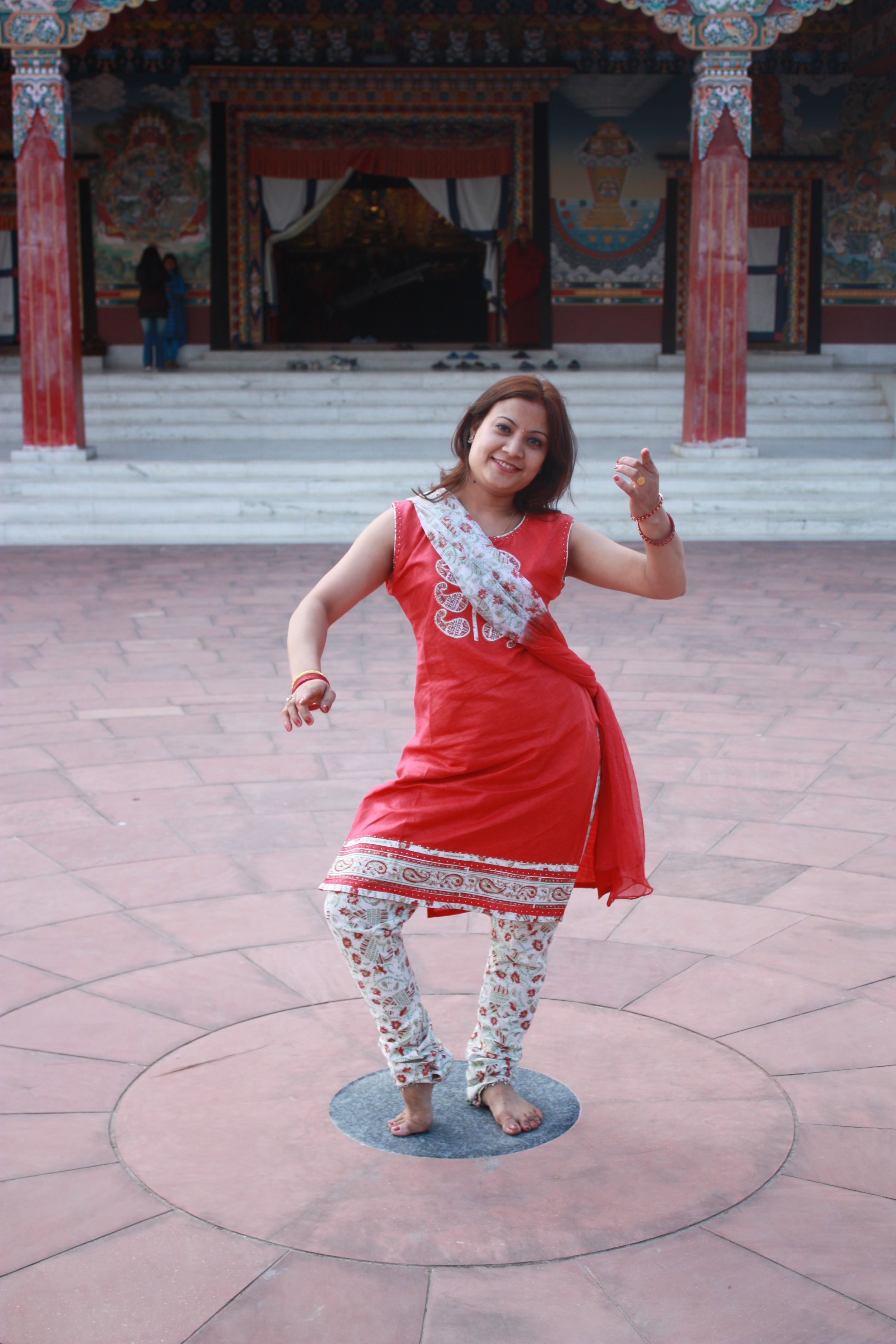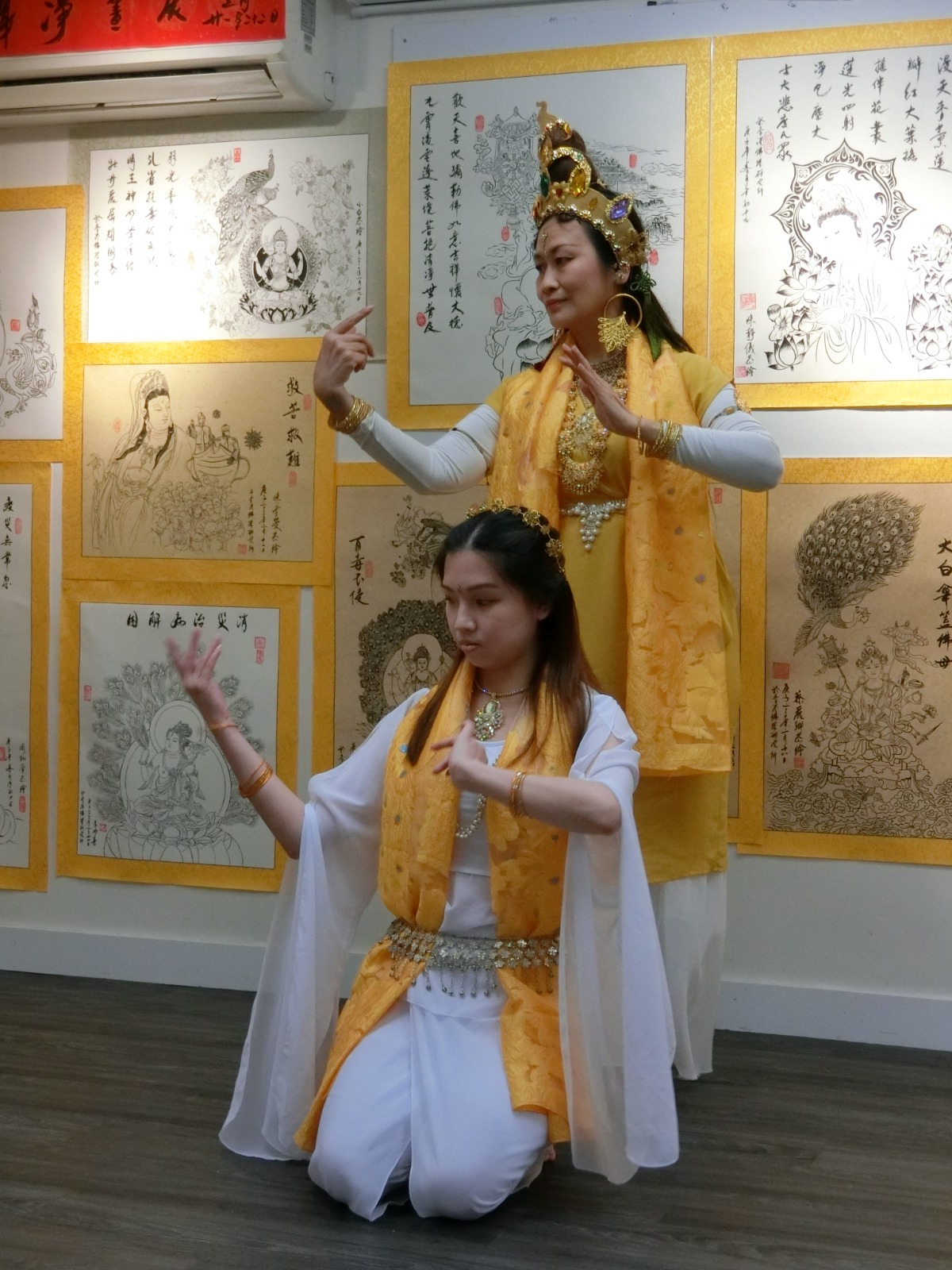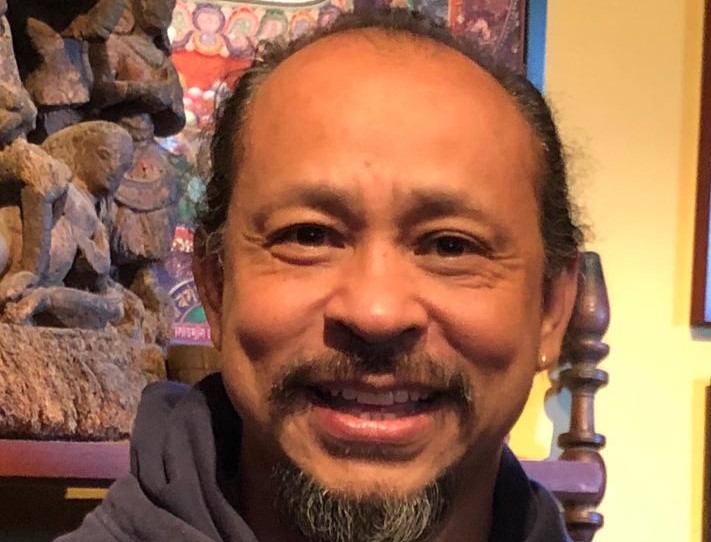Prajwal Ratna Vajracharya does not need much introduction in the world of Buddhist dance. Much has been written and shot about Charya Nritya, but less often discussed is the pedagogical interplay between teacher and student – the dance, in a sense, between the transmitter of knowledge and those to whom knowledge is being transmitted. While Prajwal has many students around the world, I spoke to two of them – Kuon Hunt and Uppa Shakya – while also taking a slightly different angle with Leslie, who can be said to be a second-generation dancer studying under one of Prajwal’s students, Tina Ho. These ladies are only several of Prajwal’s many students, who are scattered around the world and come from diverse backgrounds and walk divergent paths. However, there are common threads running through their individual, unique experiences.

Uppa Shakya has known Prajwal since 1995. “During this time, I travelled different countries with Prajwal. I taught in Aryatara School for a year. I also taught in a meditation center in Kathmandu,” she tells me. Dance and the decision to dance don’t involve one body part, of course: it’s the entire human form that participates. In a similar way, dance is not purely individual but involves one’s family and community. Uppa found this out when she realized that family restrictions made it too hard to dance. “My parents did not like me to stay late at night for performances. I had started my college too. Fortunately, Prajwal convinced my parents and I continued my journey in this field.” It was just one-way: “I feel so lucky to learn and travel with Late Ratna Kaji Guruju, Prajwal’s dad. He was a very kind, wise, humorous person. At the beginning, I was very shy, and I wasn’t doing as good as others but Guruju, Prajwal and our late singer Divya Muni Vajracharya, always guided and encouraged me with movements and expression.”
Tina Ho is based in Hong Kong and has taught many students herself. One of these is Leslie, who is easily one of the youngest participants in Prajwal’s curriculum. “In the beginning, a friend introduced me to this dance over Facebook. I’ve always been passionate about dance since childhood, and I happened to also be interested in the relationship between Zen and dance. As I studied under Tina, I discovered that my left hands and feet were not very coordinated, and my body wasn’t attuned enough, and could not naturally move with the rhythm of the beat. I even felt that the mobility of some of my smaller muscles had decreased compared to when I was younger. I think such discoveries are a good thing, because more effective control and understanding of your body can help you understand what you’re capable of, how you currently do things, and the choices you can make.”

Leslie’s own feedback also bridges the spheres of dance and religion, because at its heart Prajwal’s school teaches that these two are not separate things. “I want to understand the relationship between dance and the world and myself, and the five-way Buddha dance in my Buddhist dance also embodies this wisdom, which can strengthen my own experience of that state of wisdom,” she tells me.
What of the mentor himself? “I see Prajwal as a very liberal teacher. He is very patient with students. He explains the meaning of the words in an easy and simple way so anyone can understand and practice the Charya dance. He always treats everyone equally,” reflects Uppa. “He has students from kids to seniors and all over the world. Saying that, I mean he has this ability to teach this traditional dance to people from different parts of the world, who speaks different languages, practice different culture, I think this is amazing.”
I ask each student if each student’s expression of the dances is unique. Uppa agrees. “It depends on how you see that deity you are performing. I always meditate and visualize the deity before I perform. For example, Annapurnna is a dakini which means a wrathful deity, but she is a mother and deity of harvesting so when I perform Annapurna, I mix both the softness and wrathful together.”
Kuon says that she feels a deep connection to an ancient tradition with Charya. There is nothing mechanical or rote about the learning experience. She also notes that Prajwal’s dance classes are always accompanied by Dharma talks. “Charya dance is deeply spiritual. I love the dance experience, when all concerns fall away and the deity is moving through me,” she said. “There are hundreds of sacred dances from ancient times. As a priest, Prajwal teaches us to treat each dance and each performance as sacred. When choreographing a new dance, he combines a traditional raga with ancient or newly-written verses and discerns the appropriate movements and body poses, or mudras, to express the deeper meaning of the dance. Students are greatly blessed to participate in this evocative process with him, as he creates forms in which divine forces can manifest.”
Related features from Buddhistdoor Global
Related blog posts from Buddhistdoor Global
Nritya Mandala Mahavihara’s 10th Anniversary


